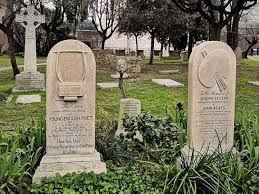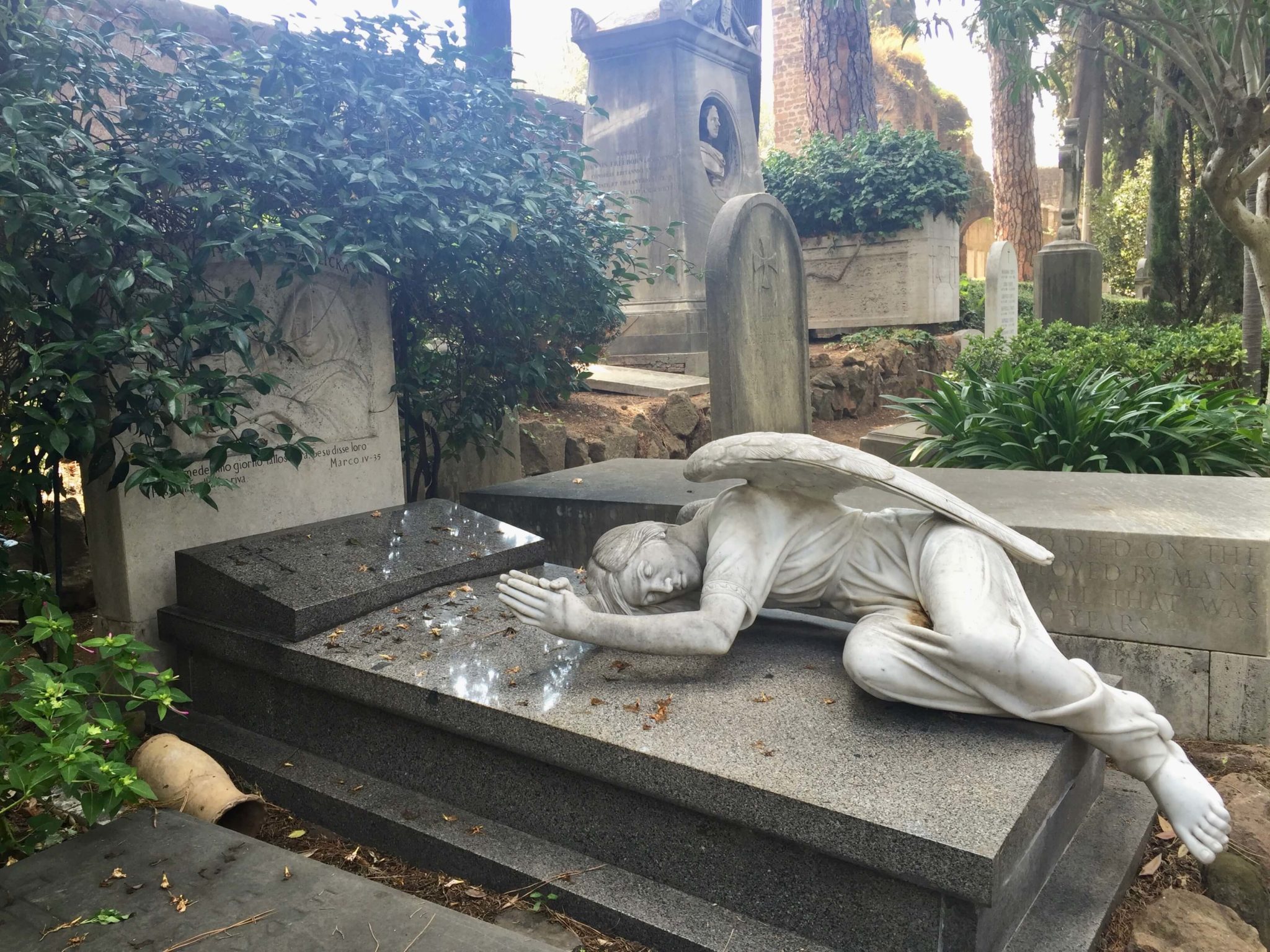Nestled in the bustling city of Rome, lies a hidden gem that holds a wealth of history and intrigue. The Protestant Cemetery, also known as the Cimitero Acattolico or Non-Catholic Cemetery, has been a final resting place for foreigners since the late 18th century. While it may not be as well-known as some of Rome’s other famous sites, this cemetery is a must-visit for those looking to uncover lesser-known aspects of the city’s past. Join us as we explore the fascinating stories and notable figures that can be found within the gates of the Protestant Cemetery in Rome.
The Protestant Cemetery in Rome was established in the late 18th century, during a time when non-Catholics were not allowed to be buried within the city walls. It was founded by the English poet and artist, John Keats, who died in Rome in 1821 and was buried there alongside other foreign Protestants. The cemetery became a popular burial place for English-speaking tourists and expats, as well as artists, writers, and intellectuals who were drawn to the city’s rich cultural heritage and vibrant atmosphere.

Today, the Protestant Cemetery continues to be an active burial ground and is managed by the Non-Catholic Cemetery Association of Rome. Notable Figures Buried at the Cemetery One of the most famous graves in the Protestant Cemetery is that of John Keats, who died at the young age of 25 from tuberculosis. His grave is marked by a simple headstone with the inscription “Here lies one whose name was writ in water,” a line from one of his poems.
Table of Contents
Protestant Cemetery in Rome
Nestled in the heart of Rome, away from the bustling streets and tourist hotspots, lies a serene and historic resting place that tells stories of love, loss, and legacy. The Protestant Cemetery is not just any cemetery; it serves as a poignant reminder of the many foreigners who found solace in this enchanting city throughout history.

With its lush greenery, intricate tombstones, and tranquil atmosphere, this hidden gem offers visitors more than just a final farewell to those interred within its grounds. Apart from Keats, there are many other notable figures buried at the Protestant Cemetery. One of the most well-known is the English writer and poet, Percy Bysshe Shelley, who drowned in a boating accident in 1822.
His grave is marked by a large marble tomb with an intricate relief of a mourning angel. It is said that Shelley’s heart was removed from his body and buried separately in the Protestant Cemetery, as it was believed that the heart was the source of one’s emotions and creativity.
It invites you to explore centuries of art, culture, and personal narratives etched into stone. Whether you’re an avid historian or simply seeking a peaceful escape from the city’s chaos, the Protestant Cemetery promises an enriching experience steeped in significance.
History and significance of the cemetery
Established in the early 19th century, the Protestant Cemetery in Rome serves as a poignant testament to the city’s layered history. Initially created for foreigners who passed away in Italy, it quickly became a sanctuary for those seeking peace beyond their homeland.

The cemetery reflects changing attitudes toward death and memorialization during that era. Its serene landscape and artistic gravestones contrast sharply with traditional Catholic burial sites. Here, individuals were celebrated not just for their lives but also for their connection to culture and art.
Significantly, this resting place has attracted writers, artists, and intellectuals from around the world. Each grave tells a story of love lost or adventures lived—a narrative woven into Rome’s rich tapestry of life. The significance lies not only in remembrance but also in honoring diverse backgrounds amid one city’s legacy.
Notable individuals buried at the cemetery
The Protestant Cemetery in Rome is the final resting place for many notable individuals. Among them is John Keats, the celebrated English poet. His grave, marked by a simple headstone, draws literary enthusiasts from around the globe.
Another significant figure is Percy Bysshe Shelley. This Romantic poet’s memorial features an inscription that captures his essence: “Nothing of him that doth fade.” Both poets symbolize the deep connection between art and mortality.
The cemetery also houses prominent figures like Antonio Gramsci, an influential Marxist theorist and politician. His presence here highlights how this resting place transcends mere burial; it represents cultural heritage.
Additionally, you can find graves of artists and philosophers who shaped their fields. Each stone tells a story—a testament to lives lived fully and passionately amid Rome’s historical embrace.
Unique features and attractions within the cemetery
The Protestant Cemetery in Rome is not just a resting place; it’s an artistic oasis. As you stroll through its serene pathways, you’ll encounter stunning sculptures and poignant epitaphs that capture the essence of those interred.
One of the most striking features is the lush greenery that envelops many graves. Ancient cypress trees sway gently overhead, providing a peaceful canopy for reflection.
Look out for the iconic pyramid-shaped tomb of John Keats, adorned with a simple inscription—“Here lies one whose name was writ in water.” This tribute reflects his untimely passing and resonates deeply with visitors.
You’ll also find elaborate mausoleums showcasing intricate carvings and memorial symbols. Each tells a story—a celebration of life amid sorrow. The combination of nature and art creates an atmosphere ideal for quiet contemplation or simply soaking up history’s whispers.
Guided tours and how to visit the cemetery
Visiting the Protestant Cemetery in Rome is a unique experience that invites deeper exploration. Guided tours offer insightful perspectives on this historic resting place. Knowledgeable guides share stories behind the elaborate tombstones and the individuals interred there.
The cemetery is open to visitors daily, making it accessible for those who want to wander its peaceful paths. It’s advisable to check tour schedules ahead of time; some are conducted in English and Italian.
For a self-guided visit, grab a map at the entrance or download one from their website. This will help you locate notable graves while allowing you to absorb the serene atmosphere at your own pace.
Remember to be respectful during your visit as this is not just a tourist site but also a memorial for many families worldwide. Wear comfortable shoes since exploring can lead you down winding pathways lined with lush vegetation and historical art.
Controversies surrounding the cemetery
The Protestant Cemetery in Rome, while a serene haven, has not been without its disputes. One of the most prominent controversies revolves around the ongoing debate over maintenance and preservation. As a historic resting place for foreigners, it faces challenges in securing necessary funding.
Another contentious issue is related to burial rights. The cemetery primarily caters to non-Catholic expatriates, which sometimes leads to tension among local communities regarding exclusive access. This can spark dialogue about inclusivity and shared spaces within such culturally rich environments.
Furthermore, some argue that certain memorials are often neglected or vandalized due to their foreign origins. This raises questions about respect for diverse heritages and how society chooses to honor them.
Such debates highlight the complexities tied to preserving history while navigating modern values and communal dynamics.
Importance of preserving historic cemeteries like this one
Historic cemeteries serve as vital links to our past. They tell stories of the lives once lived, marking the final resting places of individuals who shaped history.
Preserving these sites allows future generations to connect with their heritage. Each gravestone and monument carries unique narratives that enrich our understanding of cultural evolution.
Cemeteries like the Protestant Cemetery in Rome offer a serene space for reflection. They remind us of our shared human experience across time and geography.
Moreover, maintaining such historic sites contributes to local tourism. Visitors seeking knowledge about art, architecture, or notable figures flock here, boosting community engagement and economic vitality.
These locations provide essential insights into societal values over centuries—shaping how we perceive life and death today. By safeguarding them, we honor those who came before us while enriching our contemporary landscape.
Conclusion: A must-visit destination for history lovers in Rome
The Protestant Cemetery in Rome stands as a serene and evocative testament to the lives of those who have come from distant shores. Its tranquil atmosphere invites reflection, making it an ideal spot for anyone interested in history or cultural heritage. Nestled within this historic resting place are the graves of prominent figures whose stories enrich our understanding of art, literature, and philosophy.
Exploring the unique features and attractions within the cemetery can reveal hidden gems that captivate visitors. The lush greenery combined with intricate sculptures creates a picturesque setting that contrasts beautifully with the hustle of city life. Guided tours enhance this experience, offering deeper insights into the significance of each grave and monument.
However, like many historic sites, controversies have surrounded its preservation and interpretation. The need to maintain such cemeteries is crucial not only for honoring those buried but also for preserving their legacies for future generations.
Visiting the Protestant Cemetery offers more than just a stroll through tombstones; it’s an opportunity to connect with history on a personal level. This peaceful enclave provides moments of tranquility amidst Italy’s vibrant culture—a must-visit destination for history lovers exploring Rome’s rich tapestry.
Click here for related details.
Stay tuned on Travelyas for insight details.

